We are a narcotic to them. They eat our smoke. They make jewellery of our thoughts and passions. They are beguiled by our torment, our ecstasy, so they collect us, pluck us like strings, make chords of nations, play the music of our anguish over endless ages.
—Meppa to Psatma Nannaferi
Gods are supernatural inhabitants of the Outside possessing human characteristics and figuring as objects of ritual and worship.[1]
The Encyclopedic Glossary describes twelve gods who were worshipped by the Kiünnat and later by the Inrithi. While the Kiünnat understand these as separate Gods, the Inrithi see “the unity of the individual deities of the Cults as Aspects of the God”.[2] The Fanim believe in only one God, viewing the other Gods worshipped by the Inrithi as demons.[3]
The God of Gods[]
In Inrithi tradition, the unitary, omniscient, omnipotent, and immanent being responsible for existence, of which the Hundred Gods (and in some strains Men) are but “aspects”. In the Kiünnat tradition, the God is more an abstract placeholder than anything else. In the Fanim tradition, the God is the unitary, omniscient, omnipotent, and transcendent being responsible for existence (thus the “Solitary God”), against which the Hundred Gods war for the hearts of men.[4]
The Hundred Gods[]
The collective name of the Gods enumerated in The Chronicle of the Tusk and worshipped either under the auspices of the Cults (which is to say, subordinate to the Thousand Temples), or in the traditional versions of the Kiünnat. In the Inrithi tradition, the Hundred Gods are thought to be aspects of the God (whom Inri Sejenus famously called “the Million Souled”), much the same way various personality traits could be said to inhabit a single individual. In the far more variegated Kiünnat tradition, the Hundred Gods are thought to be independent spiritual agencies, prone to indirectly intervene in the lives of their worshippers. Both traditions recognize the differences between the Compensatory Gods, who promise direct reward for worship and devotion, the Punitive Gods, who secure sacrifices through the threat of suffering, and the more rare Bellicose Gods, who despise worship as sycophancy and favour those who strive against them. Both the Inrithi and Kiünnat traditions see the Gods as indispensable to eternal life in the Outside.
The esoteric apologist Zarathinius is infamous for arguing (in A Defence of the Arcane Arts) the absurdity of worshipping deities as imperfect and capricious as mere Men. The Fanim, of course, believe the Hundred Gods are renegade slaves of the Solitary God — demons.[5]
Ajokli, God of thievery and deception[]
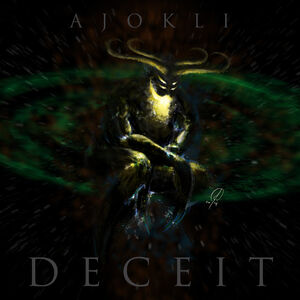
The god of deception and trickery, Ajokli is also known as the Four-Horned Brother.
Though listed among the primary Gods in The Chronicle of the Tusk, there is no true Cult of Ajokli, but rather an informal network of devotees scattered across the great cities of the Three Seas. Ajokli is oft mentioned in the secondary scriptures of the different Cults, sometimes as a mischievous companion of the Gods, other times as a cruel or malicious competitor. In the Mar’eddat, he is the faithless husband of Gierra.[6] Idols of Ajokli show him as a leering figure with a huge penis that reaches up to his chin.[7]
Akkeägni, God of disease[]
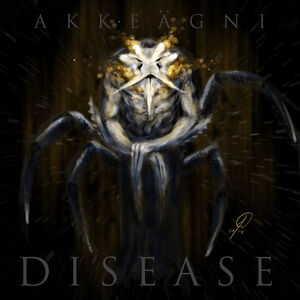
The god of disease, Akkeägni is the patron of most physicians in the Three Seas, rewarding those who strive against his influence.
Also known as the God of a Thousand Hands. Scholars have oft noted the irony that the Priesthood of Disease provides the primary repository of physicians for the Three Seas. How can one at once worship disease and war against it? According to the scriptures of the Cult, the Piranavas, Akkeägni is a so-called Bellicose God, one who favours those who strive against him over sycophants and worshippers.[8] Some of Akkeägni’s priests bear tattoos. They also use small prayer chimes which sound thanks to Akkeägni,[9] and use pharmaka and reliquaries to combat illness.[10]
Anagkë, Goddess of fortune[]
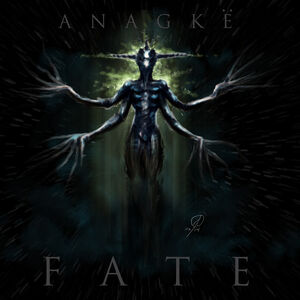
The goddess of fortune, Anagkë is also called the Whore of Fate, and is the younger sister of Bukris, god of famine.
Also known as “the Whore of Fate”. Anagkë is one of the primary Compensatory Gods, which is to say, one who rewards devotion in life with paradise in the afterlife. Her Cult is extremely popular in the Three Seas, especially among the higher, political castes.[11] According to old Kiünnat tradition, Anagkë is the younger sister of Bukris.[12] Anagkë is also commonly called simply the Whore,[13] or the Whore of Fate.[14] Anagkë also seems to be associated with the stars. In the text is said that a star “had just entered the horizon of Anagkë, the Whore of Fate”. The augur calls this “an excellent conjunction”.[14]
Bukris, God of famine[]
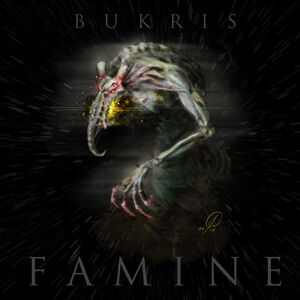
The god of famine, Bukris is the older brother of Anagkë, the Whore of Fate.
As one of the so-called Punitive Gods, who command sacrifices through threat and the imposition of suffering, Bukris has no real Cult or priesthood. According to Kiünnat tradition, Bukris is the older brother of Anagkë, which is why Anagkean Cultic Priests typically administer the rites of propitiation during times of hunger.[12]
Gierra, Goddess of carnal passion[]
One of the so-called Compensatory Gods, who reward devotion in life with paradise in the afterlife, Gierra is very popular throughout the Three Seas, particularly among aging men drawn to the “aphrodisica”, Cultic nostrums reputed to enhance virility. In the Higarata, the collection of subsidiary writings that form the scriptural core of the Cults, Gierra is rarely depicted with any consistency, and is often cast as a malign temptress, luring men to the luxury of her couch, often with fatal consequences.[15] In the Mar’eddat, she is wife of the faithless Ajokli.[6] Gierra’s “voluptuous” idol, depicts “wide-thrown ankles”.[7]
“The temple prostitutes of Gierra believes, that despite the hundreds of men who uses them, they couples with only one, Hotos, the Priapic God.”[16] Priestesses of Gierra tattoo their limbs in inscriptions and cover their bodies with oil.[17] Part of their duties is to have sex with male worshippers.[18] Sumni harlots must have the Sign of Gierra, twin serpents, tattooed on the back of their left hand, apparently in imitation of the Priestesses of Gierra.[19]
Gilgaöl, God of war and conflict[]

The god of conflict and war, Gilgaöl is the brother of Yatwer.
One of the so-called Compensatory Gods, who reward devotion in life with paradise in the afterlife, Gilgaöl is the second most popular of the Hundred Gods, only after his sister Yatwer. In the Higarata, the collection of subsidiary writings that form the scriptural core of the Cults, Gilgaöl is depicted as harsh and sceptical of Men, continually demanding proof of worth from those who would follow him. Though subordinate to the Thousand Temples, the Gilgallic Cult boasts nearly as many priests, and perhaps receives more in the way of sacrificial donations.[20] Gilgaöl is also known as the Shield-Breaker[21] and One-Eyed War.[22] At least the position of High Cultist of Gilgaöl is hereditary. The priests took part in the celebration of Ikurei Conphas’s victory over the Scylvendi:
- “In accordance with custom, the hereditary priests of Gilgaöl brought basins of water. As Conphas expected, they smeared lion’s blood on his limbs and, muttering prayers, cleansed his symbolic wounds.”[23]
They also sacrifice goshawks, dogs and lions, by burning them in godfires for the sake of those at war.[23][24][10] Other goshawks are released into the setting evening sun.[10] At least in one case, the hide of a lion was retained by the offerer.[23] After battle the priests of Gilgaöl preside over the declaration of Battle-Celebrant. In their ornamental red hauberks, the Gilgallic Priests rise to declare the Battle-Celebrant. The High Cultist of Gilgaöl, steps to the forefront of the others, performs the Gilgallic rites, and moves to stand over the Battle-Celebrant. He is told to kneel, and a circlet woven of thorns and olive sprigs, is placed on his head; the High Cultist of Gilgaöl finally cries, “Rise, [name], … Battle-Celebrant!”[25] It is also the task of the High Cultist to consult his omen-texts to determine the will of the God.[26]
Husyelt, God of the hunt[]
One of the so-called Compensatory Gods, who reward devotion in life with paradise in the afterlife, Husyelt comes after only Yatwer and Gilgaöl in Cultic popularity, particularly in the Middle-North. In the Higarata, the collection of subsidiary writings that form the scriptural core of the Cults, Husyelt is depicted as the most anthropocentric of the Hundred Gods, as intent upon enabling his worshippers as he is upon securing their obedience and devotion.[27] In The Chronicle of the Tusk, after:
- “The Prophet Angeshraël came down from his fast on Mount Eshki. Husyelt, the Tusk tells us, sent a hare to him, so he might eat at last. Angeshraël skinned the Hunter’s gift and struck a fire so he might feast. When he had eaten and was content, sacred Husyelt, the Holy Stalker, joined him at his fire, for the Gods in those days had not left the world in the charge of Men. Angeshraël, recognizing the God as the God, fell immediately to his knees before the fire, not thinking where he would throw his face. And the God said, ‘Why does our Prophet fall to his knees only? Are not Prophets Men like other Men? Should they not throw their faces to the earth?’ To which Angeshraël replied, ‘I find my fire before me.’ And peerless Husyelt said, ‘The fire burns across earth, and what fire consumes becomes earth. I am your God. Throw your face to the earth.’ So Angeshraël, the Tusk tells us, bowed his head into the flames.”[28]
The Cult of Husyelt is rumoured to be extraordinarily wealthy, and high-ranking members of the Husyeltic priesthood often possess as much political clout as Shrial apparati.[27] Shanks of butchered antelope are burned for Husyelt.[24] After cursing, some superstitious people counter by making “the sign of Husyelt, the Dark Hunter”.[29] Husyelt is also commonly called the Dark Hunter and the Stalker.[30][31]
Jukan, God of sky and season[]
One of the so-called Compensatory Gods, who reward devotion in life with paradise in the afterlife, Jukan almost rivals Yatwer in popularity among peasants yet is scarcely represented in major urban centres. The priests of Jukan are readily recognizable by their blue-painted skin. The Marjukari, an extreme ascetic branch of the Jukanic Cult, are notorious for living as hermits on mountaintops.[32] During the mass migration to Momemn before the Holy War, priests of Jukan led people while singing soft hymns and clinking finger cymbals.[33]
Juru, God of virility and fertility[]
One of the so-called Compensatory Gods, who reward devotion in life with paradise in the afterlife, Juru is popular among aging caste-noble men, and possesses only a handful of temples, most of them found in major cities. It is often mocked as the Mistress Cult.[34]
Momas, God of storms, seas, and chance[]
One of the so-called Compensatory Gods, who reward devotion in life with paradise in the afterlife, Momas is the primary deity worshipped by seamen and merchants, and is the patron divinity of Momemn (whose name means "Praise Momas") and of Cironj. In the Higarata, he is depicted as cruel, even malicious, and obsessed with minute matters of propriety—leading some commentators to suggest he is in fact a Bellicose, as opposed to a Compensatory, God. His primary device is the White Triangle on Black (representing the Shark’s Tooth worn by all devotees of Momas).[35] During storms, sailors will wail and supplicate themselves to Momas.[17] Additionally, Nroni fishermen attribute a good catch to Momas.[36] During the Feast of Kussapokari, which marks the summer solstice, the upper castes in Momemn celebrate on pleasure galleys, where the first swallow is spat into the sea as a propitiation to Momas.[9]
Onkis, Goddess of hope and aspiration[]
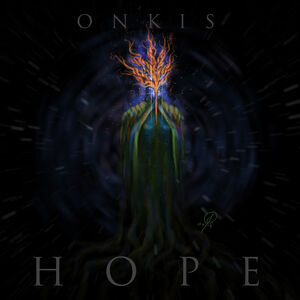
Goddess of hope and aspiration, Onkis is also known as the Singer-in-the-Dark, she who drives men to forever reach for more than they can hold.
One of the so-called Compensatory Gods, who reward devotion in life with paradise in the afterlife, Onkis draws followers from all walks of life, though rarely in great numbers. She is only mentioned twice in the Higarata, and in the (likely apocryphal) Parnishtas she is portrayed as a prophetess, not of the future, but of the motivations of Men. The so-called “shakers” belong to an extreme branch of the Cult, where the devotees ritually strive to be “possessed” by the Goddess. Her symbol is the Copper Tree (which also happens to be the device of the ancient Nonman Mansion of Siöl, though no link has been established).[37] Onkis is also called the Singer-in-the-Dark.[36] Her idol depicts the severed head of a beautiful woman upon a copper tree.[7] In the Irreüma in Sumna, her idol is described as:
- “The idol worked in white marble, eyes closed with the sunken look of the dead. At first glance she appeared to be the severed head of a woman, beautiful yet vaguely common, mounted on a pole. Anything more than a glance, however, revealed the pole to be a miniature tree, like those cultivated by the ancient Norsirai, only worked in bronze. Branches poked through her parted lips and swept across her face — nature reborn through human lips. Other branches reached behind to break through her frozen hair.”[36]
The idol also has a small trough gouged in her pedestal for food offerings.[36]
Yatwer, Goddess of fertility[]
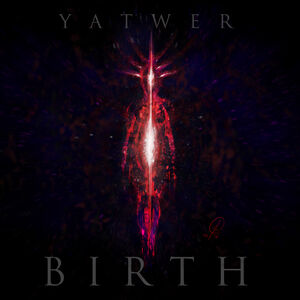
The Monstrous Mother of Birth, Yatwer envisioned as a cosmic Ciphrang-type being, oldest and most powerful of the Hundred Gods of Eärwa. Readers don’t know what form she actually takes, but this was a fun pic to do.
She is one of the so-called Compensatory Gods, who reward devotion in life with paradise in the afterlife.[38] While Gilgaöl is the most popular deity among caste-nobles, his sister Yatwer is favoured by the lower castes — some six out of ten caste-menials regularly attend some kind of Yatwerian rite. So Yatwer is far and away the most popular of the Hundred.[39] In the Higarata, the collection of subsidiary writings that form the scriptural core of the Cults, Yatwer is depicted as a beneficent, all-forgiving matron, capable of seeding and furrowing the fields of nations with a single hand. Some commentators have noted that Yatwer is anything but revered in either the Higarata or The Chronicle of the Tusk (wherein “tillers of soil” are often referred to with contempt). This is why Yatwerians tend to rely on their own scripture, the Sinyatwa, for their liturgical rites and ceremonies. Despite the vast numbers of adherents enjoyed by the Cult, it remains one of the more impoverished, and seems to generate a large number of zealous devotees as a result.[38] Her symbol is a harvest sickle that also forms the outline of a pregnant belly.[39]
- “The Cultic priestesses of Yatwer, always drag two victims — usually spring lambs — to the sacrificial altar, one to pass under the knife, the other to witness the sacred passage. In this way, every beast thrown upon the altar always knows, in its dim way, what is about to happen. For the Yatwerians, ritual isn’t enough: the transformation of casual slaughter into true sacrifice requires recognition.”[40]
One knowing lamb is equal to ten unwitting bulls, it is held.[41] Yatwerian priestesses also use unguents of manure.[25] Yatwer is a Point of View character in The White-Luck Warrior.[42]
References[]
- ↑ Encyclopedic Glossary, ‘Gods, the’
- ↑ Encyclopedic Glossary, ‘Inrithism’
- ↑ Encyclopedic Glossary, ‘Fanimry’
- ↑ Encyclopedic Glossary, ‘God, the’
- ↑ Encyclopedic Glossary, ‘Hundred Gods’
- ↑ 6.0 6.1 Encyclopedic Glossary, ‘Ajokli’
- ↑ 7.0 7.1 7.2 The Thousandfold Thought, Chapter 10
- ↑ Encyclopedic Glossary, ‘Akkeägni’
- ↑ 9.0 9.1 The Darkness That Comes Before, Chapter 19
- ↑ 10.0 10.1 10.2 The Warrior-Prophet, Chapter 18
- ↑ Encyclopedic Glossary, ‘Anagkë’
- ↑ 12.0 12.1 Encyclopedic Glossary, ‘Bukris’
- ↑ Encyclopedic Glossary, ‘Whore, the’
- ↑ 14.0 14.1 The Darkness That Comes Before, Chapter 5
- ↑ Encyclopedic Glossary, ‘Gierra’
- ↑ The Thousandfold Thought, Chapter 6
- ↑ 17.0 17.1 The Darkness That Comes Before, Chapter 3
- ↑ The Darkness That Comes Before, Chapter 11
- ↑ Encyclopedic Glossary, ‘Sign of Gierra’
- ↑ Encyclopedic Glossary, ‘Gilgaöl’
- ↑ Encyclopedic Glossary, ‘Shield-Breaker, the’
- ↑ The Warrior-Prophet, Chapter 5
- ↑ 23.0 23.1 23.2 The Darkness That Comes Before, Chapter 7
- ↑ 24.0 24.1 The Warrior-Prophet, Chapter 6
- ↑ 25.0 25.1 The Warrior-Prophet, Chapter 7
- ↑ The Warrior-Prophet, Chapter 20
- ↑ 27.0 27.1 Encyclopedic Glossary, ‘Husyelt’
- ↑ The Warrior-Prophet, Chapter 11
- ↑ The Darkness That Comes Before, Prologue
- ↑ Encyclopedic Glossary, ‘Dark Hunter, the’
- ↑ Encyclopedic Glossary, ‘Stalker, the’
- ↑ Encyclopedic Glossary, ‘Jukan’
- ↑ The Darkness That Comes Before, Chapter 10
- ↑ Encyclopedic Glossary, ‘Juru’
- ↑ Encyclopedic Glossary, ‘Momas’
- ↑ 36.0 36.1 36.2 36.3 The Darkness That Comes Before, Chapter 4
- ↑ Encyclopedic Glossary, ‘Onkis’
- ↑ 38.0 38.1 Encyclopedic Glossary, ‘Yatwer’
- ↑ 39.0 39.1 The Judging Eye, Chapter 5
- ↑ The Warrior-Prophet, Chapter 3
- ↑ Encyclopedic Glossary, ‘“one lamb for ten bulls”’
- ↑ The White-Luck Warrior, Chapter 10
